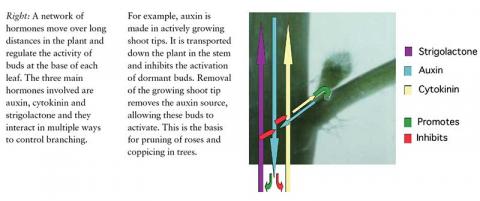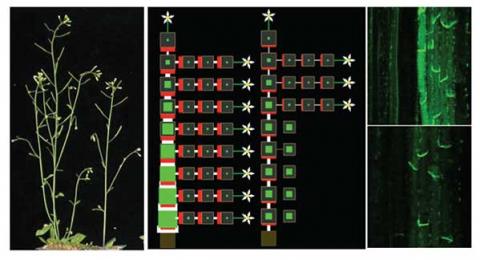Hormone signaling and the control of shoot branching
We are interested in how plants adapt their body plan to suit the environmental conditions in which they are growing. We are using the control of shoot branching in Arabidopsis as a model system to understand the regulatory systems that plants use to achieve this flexible development. Our main focus is on a network of hormonal signals that move between the root and shoot, allowing local and systemic information from the environment to be integrated to regulate branching. We would like to understand how the molecular events underlying the signalling and transport of these hormones supports flexible, environmentally sensitive patterns of branching in the whole plant.
Central to our work is the use of computational models of the actions and interactions of the hormonal network that regulates branching. The network includes multiple feedback loops making it difficult to predict its behaviour intuitively. Dynamical models of the system allow hypotheses to be tested in silico, generating predictions and identifying important parameters, which can then be used to guide wet lab experiments.



